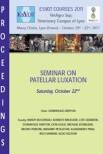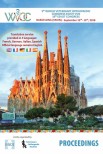Reasons for performing study: There is a lack of evidence-based data on the prevalence, outcome and risk factors of distal limb cast sores, and no objective tool has been described for the early detection of cast sores.
Objectives: To investigate the prevalence, location, outcome and risk factors of cast sores after application of a distal limb cast and to determine whether static thermography of the cast is a valuable tool for the assessment of sores.
Methods: A prospective study was conducted on horses treated with a distal limb cast. At each cast removal, cast sores were graded as superficial sores (SS), deep dermal sores (DS) or full thickness skin ulcerations (FS). In several cases, a thermographic evaluation of the cast was performed immediately prior to removal and differences in temperature (ΔT) between the coolest point of the cast and 2 cast regions predisposed for sore development (dorsoproximal mc/mtIII and palmar/plantar fetlock) were calculated.
Results: Mean ± s.d. total casting time of 70 horses was 31 ± 18 days. Overall, 57 legs (81%) developed at least SS. Twenty-four legs (34%) ultimately developed DS and one horse had an FS. Multivariable analysis showed that the severity of sores was positively associated with increasing age (OR: 1.111, P = 0.028), a normal (vs. swollen) limb (OR: 3.387, P = 0.023) and an increase in total casting time (OR per week: 1.363, P = 0.002). The thermographic evaluation (35 casts) revealed that the severity of sores was positively associated with increasing ΔT (OR: 2.100, P = 0.0005). The optimal cut-off values for the presence of SS and DS were set at, respectively, ΔT = 2.3 and 4.3°C.
Conclusion and potential relevance: Distal limb cast is a safe coaptation technique with increasing risk of developing sores with time. Thermography is a valuable and rapid clinical tool to monitor the development of cast sores.









